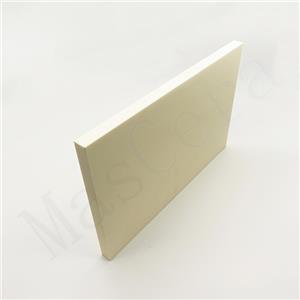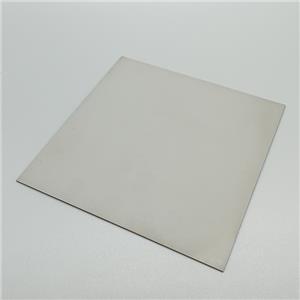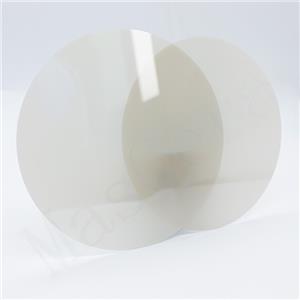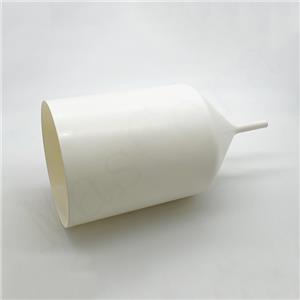Introduction of main sintering methods for technical ceramics
Sintering refers to the densification process of ceramic green bodies after molding. Under the action of high temperature, elimination of pores and volume shrinkage will happen, producing a solid sintered body with expected geometry. The sintering process has a crucial impact on the performance of the material. It is very important to choose a suitable sintering method when manufacturing different kinds of technical ceramics and for different property demands.
There are several methods for sintering technical ceramics:
(1) Atmospheric sintering
Atmospheric sintering is one of the most commonly used sintering methods, which refers to a method of heating and sintering ceramic products by adding suitable sintering aids under atmospheric pressure (that is, no additional pressure is required during the sintering process).
The disadvantage of atmospheric sintering is that the sintering temperature is high, the requirements on the kiln are also high, and the energy waste is large.
(2) Hot pressing sintering
Hot pressing sintering is a sintering method for ceramic powder which is difficult to sinter, ceramic power is filled into the mold cavity and then heated from uniaxial direction while pressing, it means that molding and sintering are carried out at the same time.
Ceramic powder is in a thermoplastic state during the sintering process, which helps the contact, diffusion and flow of particles, therefore the molding pressure is lower; It can also reduce the sintering temperature and shorten the sintering time, resisting the growth of crystal grains and obtaining ceramic parts with fine crystal grains, full density, and good mechanical and electrical properties. There is no need to add sintering aids or molding aids, and ultra-high purity ceramic products can be produced.
The disadvantage of hot-pressing sintering is that it adopts unidirectional pressure, so the shape and size of the product are restricted by the mold, which is generally cylindrical or ring-shaped. In addition, unidirectional pressure also makes the pressure distribution in the green body uneven, which easily causes anisotropy in the microstructure and mechanical properties of the ceramic sintered body.
(3) Hot isostatic pressing sintering
Hot isostatic pressing sintering refers to the process of sintering and densification of ceramic powder, green body or pre-fired body through the joint action of high temperature and all-direction-well-balanced high-pressure gas. It is suitable for manufacturing products with complex shapes and can improve the density and performance of products. The ceramic parts after hot isostatic pressing sintering will have well-balanced density and same properties in all directions.
Hot isostatic pressing is a sintering method which combines the advantages of atmospheric sintering and hot pressing sintering, it can not only increase the density like hot pressing sintering, inhibit the growth of grains, and improve the performance of the product. Moreover, it can also produce ceramic parts with very complicated shapes like the atmospheric sintering method, and avoid the grain orientation of non-equaxial crystal products.
(4) Reaction sintering
Refers to the method of sintering ceramic materials through the mutual reaction of the gas or liquid phase with the matrix. The most typical products are reaction sintered silicon carbide and reaction sintered silicon nitride ceramics. The advantage of this sintering method is that the process is simple, the product can be slightly processed or not processed, and products with complex shapes can also be produced. The disadvantage is that unreacted chemicals remain in the product, the structure is not easy to control, and the product that is too thick is not easy to completely sinter.
(5) Gas pressure sintering
Gas pressure sintering (GPS) refers to sintering method that a certain gas pressure is applied during the high-temperature sintering process in order to suppress the decomposition and weight loss of ceramic materials at high temperatures. Thereby, the sintering temperature can be increased, the densification of the material can be further promoted, and high-density ceramic products can be obtained.
Both gas pressure sintering and hot isostatic pressing sintering use gas as a method to transmit pressure, but the pressure and pressure effect of the two are different. In HIP sintering, the gas pressure is high (100~300MPa), and the main function is to promote the complete densification of ceramics. In GPS sintering, the applied gas pressure is small (1~10MPa), which mainly suppresses the thermal decomposition of Si3N4 or other nitride-based high-temperature materials.
(5) Vapor deposition sintering
The vapor deposition sintering can be divided into physical vapor method and chemical vapor method. There are two main physical methods: sputtering deposition and evaporative deposition. The sputtering method is to bombard a flat target with an electron beam in a vacuum, and the target atoms are stimulated and then coated on the sample substrate. The chemical vapor deposition method introduces reaction gas and gas mixture while the substrate material is heated, and the materials generated by decomposition or reaction at high temperature is deposited on the substrate to form a dense material.
Mascera Technology is a professional supplier for technical ceramic parts coming from China, we are focusing on providing ceramic parts in excellent properties, high accuracy, constant quality and competitive cost. We offer tailor-made production as per customers' request on ceramic materials of Alumina Ceramics (Al2O3), Zirconia Ceramic(ZrO2), Boron Nitride Ceramics(HBN&PBN), Silicon Nitride Ceramics (Si3N4), Silicon Carbide Ceramics (SiC), Aluminum Nitride Ceramics (AlN) and Machinable Glass Ceramics. Any related demand about technical ceramics, please contact us, we will do our best effort to solve your problem.




